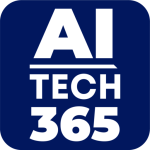Patent grants exclusive rights to the AI systems behind Pearl’s pioneering Practice Intelligence® clinical performance platform
Pearl, the global leader in dental AI solutions, announced that the United States Patent and Trademark Office has issued U.S. Patent No. 11,776,677 entitled “Computer Vision-Based Analysis Of Provider Data” for the exclusive rights to the computer vision system at the core of its pioneering clinical performance software, Practice Intelligence®.
This patent covers the machine learning techniques used to analyze data associated with one or more dental practices to identify missed treatment opportunities, future treatment opportunities, or provider performance metrics. Practice Intelligence® analyzes AI-detected evidence in patient radiographs in conjunction with patient treatment data to identify office and practitioner-specific patterns. Pearl’s patented system then synthesizes its findings into actionable patient health and clinical performance insights, helping to facilitate superior oral healthcare outcomes for patients, strong financial outcomes for practices, and a more productive dental care workflow.
“Practice Intelligence equips dental practices around the world with clinical performance insights essential for increasing operational efficiency and boosting practice growth,” said Ophir Tanz, Founder and CEO of Pearl. “With this patent, Pearl is expanding its portfolio of exclusive intellectual property, reinforcing the technological advantages and effectiveness of our dental AI solutions.”
This latest patent increases Pearl’s total number of U.S. patents to 12. Earlier this year, Pearl was issued a patent for its “Systems and Methods for Automated Medical Image Analysis,” which grants Pearl the exclusive rights to the computer system technology supporting the application programming interface (API) of its chairside AI disease detection software, Second Opinion®. Other recent patents include “Computer Vision-Based Claims Processing,” “Systems and Methods for Insurance Fraud Detection (2021)”, “Systems and Methods For Insurance Fraud Detection (2020)” and “Systems and Methods for Automated Medical Image Annotation.”
SOURCE: BusinessWire

